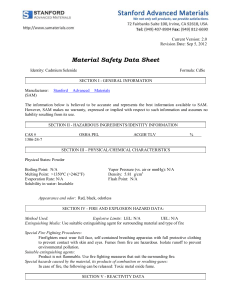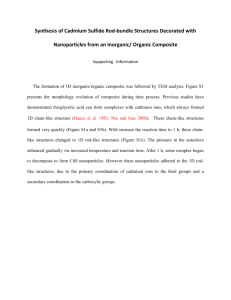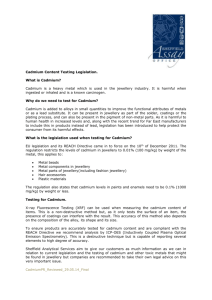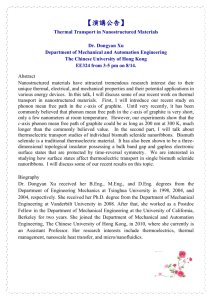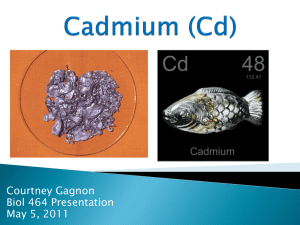General Guidelines for Cadmium Selenide
advertisement
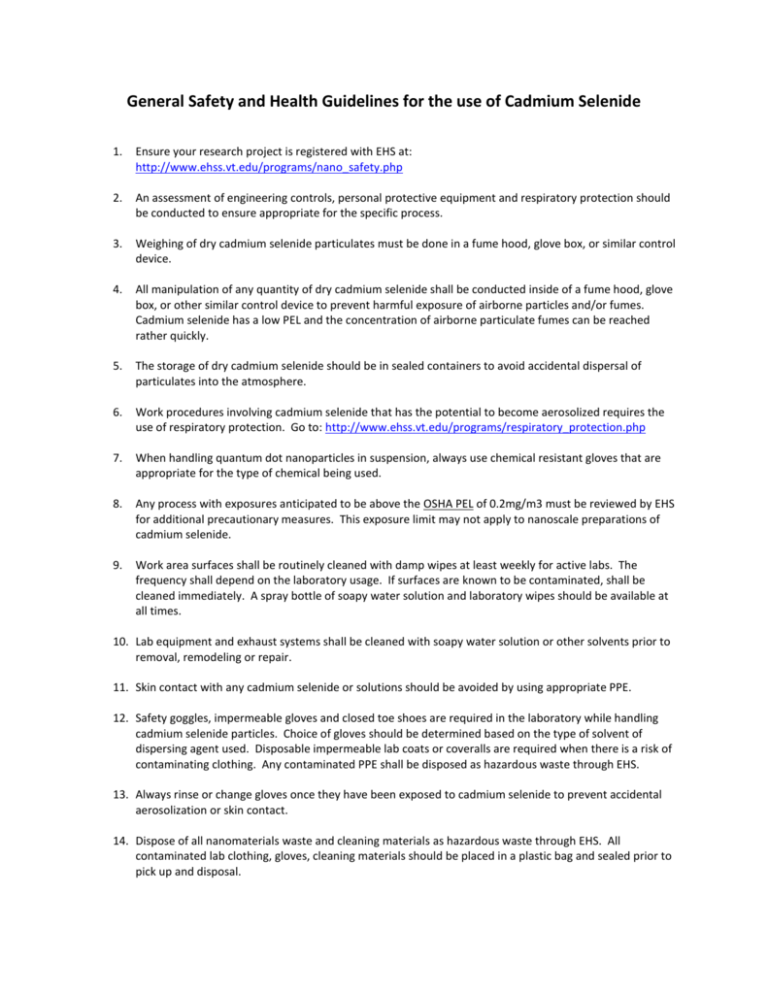
General Safety and Health Guidelines for the use of Cadmium Selenide 1. Ensure your research project is registered with EHS at: http://www.ehss.vt.edu/programs/nano_safety.php 2. An assessment of engineering controls, personal protective equipment and respiratory protection should be conducted to ensure appropriate for the specific process. 3. Weighing of dry cadmium selenide particulates must be done in a fume hood, glove box, or similar control device. 4. All manipulation of any quantity of dry cadmium selenide shall be conducted inside of a fume hood, glove box, or other similar control device to prevent harmful exposure of airborne particles and/or fumes. Cadmium selenide has a low PEL and the concentration of airborne particulate fumes can be reached rather quickly. 5. The storage of dry cadmium selenide should be in sealed containers to avoid accidental dispersal of particulates into the atmosphere. 6. Work procedures involving cadmium selenide that has the potential to become aerosolized requires the use of respiratory protection. Go to: http://www.ehss.vt.edu/programs/respiratory_protection.php 7. When handling quantum dot nanoparticles in suspension, always use chemical resistant gloves that are appropriate for the type of chemical being used. 8. Any process with exposures anticipated to be above the OSHA PEL of 0.2mg/m3 must be reviewed by EHS for additional precautionary measures. This exposure limit may not apply to nanoscale preparations of cadmium selenide. 9. Work area surfaces shall be routinely cleaned with damp wipes at least weekly for active labs. The frequency shall depend on the laboratory usage. If surfaces are known to be contaminated, shall be cleaned immediately. A spray bottle of soapy water solution and laboratory wipes should be available at all times. 10. Lab equipment and exhaust systems shall be cleaned with soapy water solution or other solvents prior to removal, remodeling or repair. 11. Skin contact with any cadmium selenide or solutions should be avoided by using appropriate PPE. 12. Safety goggles, impermeable gloves and closed toe shoes are required in the laboratory while handling cadmium selenide particles. Choice of gloves should be determined based on the type of solvent of dispersing agent used. Disposable impermeable lab coats or coveralls are required when there is a risk of contaminating clothing. Any contaminated PPE shall be disposed as hazardous waste through EHS. 13. Always rinse or change gloves once they have been exposed to cadmium selenide to prevent accidental aerosolization or skin contact. 14. Dispose of all nanomaterials waste and cleaning materials as hazardous waste through EHS. All contaminated lab clothing, gloves, cleaning materials should be placed in a plastic bag and sealed prior to pick up and disposal.
